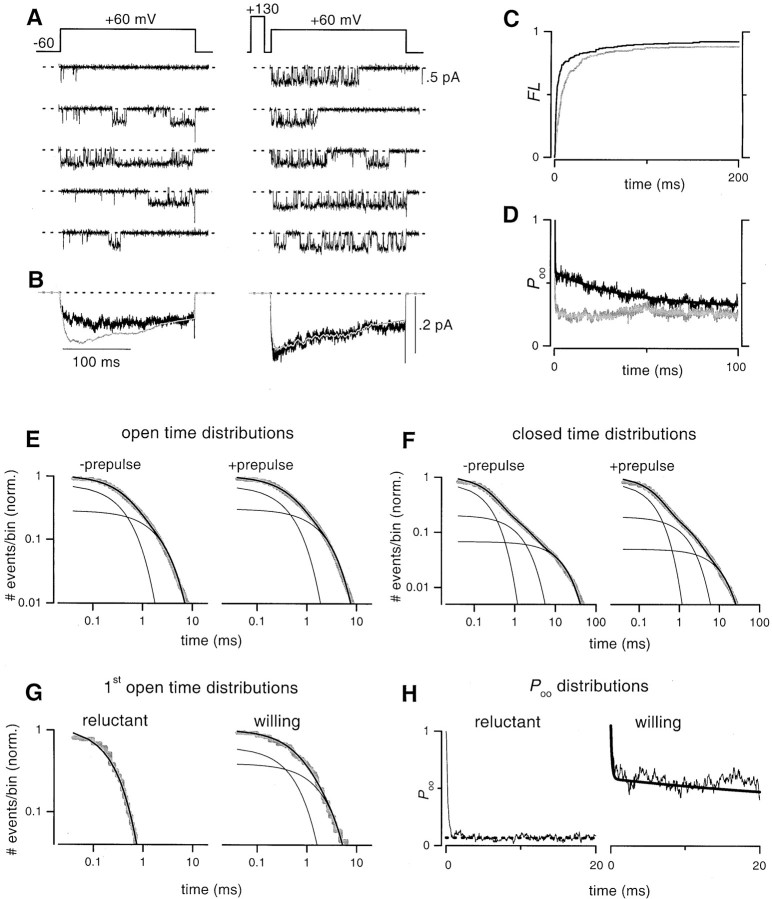Fig. 4.
Reluctant N-channel openings occur with increased frequency and faster activation kinetics at +60 mV.A–H, Identical format as in Figure 3. A,Mean unitary current amplitude was 0.46 ± 0.01 pA (n = 3). B, Ensemble average currents. Identical format as in Figure 3B.C,FL distributions obtained either without (gray trace) or with (black trace) a prepulse. D, Smooth curve through the data are a least-squares fit of a biexponential function to the +prepulse data.E, Fits to open time histograms had the following parameters: −prepulse (τ1 = 0.41 msec, 72%; τ2 = 2.11 msec, 28%; 7722 total events), +prepulse (τ1 = 0.44 msec, 69%; τ2 = 2.23 msec, 31%; 10,365 total events). F, Fits to closed time histograms had the following parameters: −prepulse (τ1 = 0.23 msec, 73%;τ2 = 1.51 msec, 20%;τ3 = 15.9 msec, 7%; 7601 events), +prepulse (τ1 = 0.23 msec, 76%;τ2 = 1.64 msec, 19%;τ3 = 11.18 msec, 5%; 10,305 events).G, Lifetime distributions for first openings of reluctant sweeps were fit by a single exponential (τ = 0.23 msec), whereas those of willing channels were fit by two exponentials (τ1 = 0.58 msec, 61%;τ2 = 2.28 msec, 39%).H, The steady state reluctantPoo value was 0.07 (dotted line). Smooth curve through the willingPoo was reproduced from the fit inD.

